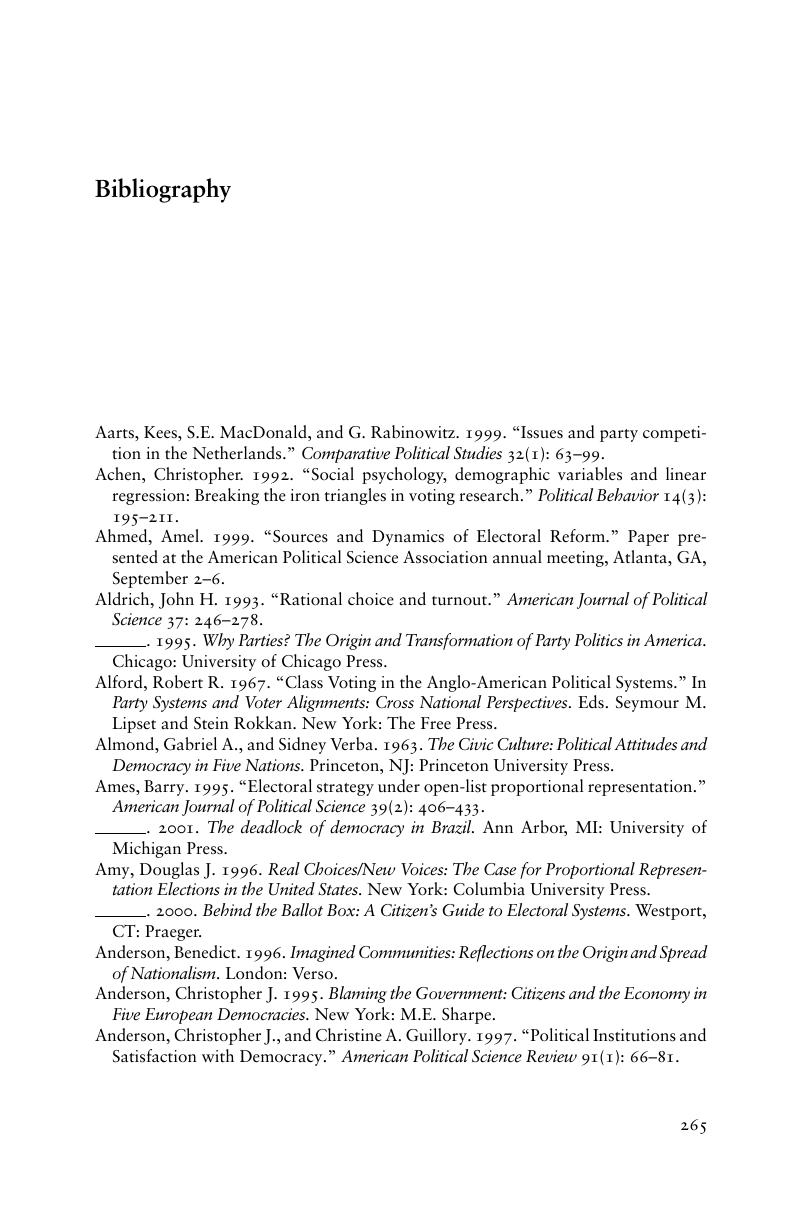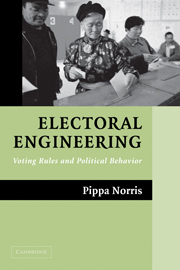Bibliography
Published online by Cambridge University Press: 05 September 2012
Summary

- Type
- Chapter
- Information
- Electoral EngineeringVoting Rules and Political Behavior, pp. 265 - 304Publisher: Cambridge University PressPrint publication year: 2004



